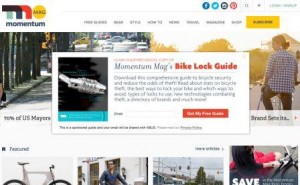Search Engine Optimization, the process of improving the visibility or ranking of a website on Google search results and increasing organic traffic, can be broken down in three major components:
- Technical structure (20%). Technical structure which includes redirects, pertinent keywords in the URL structure, and other technical factors.
- On-page optimization (20%). This refers to attributes such as meta descriptions, keywords, and alternate text.
- Offsite factors (60%). They refer to the number of backlinks a website has.
To help businesses improve their search rankings through on-page SEO, I’ve suggested three tactics you should use:
1. Internal linking
Internal links are hyperlinked keywords on your webpage that link another URL on your website. An example would be: digital marketing.
Internal linking is a useful SEO tactic because:
• Your webpages will gain backlinks, even if the links are from your own site.
• You control the keywords you want to hyperlink. This allows you to rank for targeted keywords.
• It’s a white hat tactic which means Google won’t penalize you.
Internal linking can be applied on any page on a website but it’s most often used on blog posts because:
• There are generally more blog articles on a website than other kind of pages. This means that you can gain more internal links from blog posts.
• You can earn internal links continuously by writing new blog articles.
• You can target particular keywords by writing on topics related to those keywords.
2. Optimize keywords in title tags
The <title> tag is a HTML element that defines the names of all HTML documents.
For example, the <title> for business2community.com’s homepage is Business 2 Community – Top Trends, News & Expert Analysis.
You can find the title tag of a page by placing your curser over the tab window of the webpage in your browser or by right-clicking on webpage and selecting View page source.
The title tag is one of the most important components of a page’s search ranking because it tells Google what the webpage is about.
If the title tag of an article is called “3 Easiest Exercises to Help You Lose Body Fat”, Google will understand that the article is related to “exercise” and “lose body fat” and rank the blog for those two keywords.
To optimize title tags for SEO, use one of the following optimal formats for your title tag:
Primary Keyword – Secondary Keyword | Brand Name
Or
Brand Name – Primary Keyword | Secondary Keyword
3 Easiest Exercises to Help You Lose Body Fat | Boston Fitness Club | Steve Smith Fitness Gym
Steve Smith Fitness Gym – 3 Easiest Exercises to Help You Lose Body Fat | Boston Fitness Club
3. XML Sitemap
A sitemap is “a model of a website’s content designed to help both users and search engines navigate the site. A site map can be a hierarchical list of pages (with links) organized by topic, or an organization chart.”
Example:

A XML sitemap is a “file where you can list the web pages of your site to tell Google and other search engines about the organization of your site content. Search engine web crawlers like Googlebot read this file to more intelligently crawl your site.”
Popular content management systems such as WordPress and Drupal have plugins that generate a XML sitemap for you. Once a XML sitemap is generated, you can submit it to Google Webmaster Tools so Google can crawl the pages in the sitemap and index the webpages!
By using the three approaches, you can easily earn links to targeted pages, rank for relevant keywords, and ensure all your webpages are indexed!
If you have any questions about the article, please leave a comment below!
Digital & Social Articles on Business 2 Community(66)
Report Post






